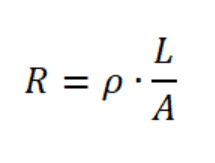BAR & WIRE

Wiring Excellence, Bar by Bar
The bar and wire industry provides the backbone for construction, manufacturing, communication, and transportation, making it indispensable in our modern world.
During the bar manufacturing process and the wire drawing process, measuring the linear electrical resistance plays a crucial role to ensure their functionality :
- Quality Assurance: Monitoring the linear resistance helps verify that the rod material and the wire meet their specifications.
- Process Control: It allows adjustments during manufacturing to achieve desired electrical properties.
As the wire is drawn through the dies, its resistance changes due to the altered dimensions (cross-sectional area). The resistance of a wire is directly proportional to its length and inversely proportional to its cross-sectional area. Therefore, measuring the resistance provides insights into the wire’s properties.
Four-Point Probe Method: Similar to wire drawing, this technique involves placing four evenly spaced probes on the rod’s surface. Two inner probes pass current through the rod, while the outer probes measure the voltage drop. By analysing the voltage and current, the rod’s linear resistance can be calculated.
Area Calculation: Linear resistance can also be determined from the rod’s cross-sectional area and resistivity using the formula:

where:
(R) is the linear resistance.
(ρ) is the resistivity of the material.
(L) is the length of the rod.
(A) is the cross-sectional area of the rod.
Real-Time Monitoring: In advanced manufacturing processes, real-time electrical resistance monitoring can be deployed during rod production. This ensures consistency and detects any deviations from expected values.
Precise linear resistance measurements contribute to the overall quality and performance of rods in various applications, including electrical conductors, structural components, and more.
Precise linear resistance measurements contribute to the overall quality and functionality of rods and wires in various applications, including electronics, power transmission, and more.
AESA makes measurement instruments available to perform such testing.

ResTest 1
For rods
RestTest 50
Up to 50 mm2
Resistivity / conductivity
A unique method developed by AESA
DC Linear Resistance
Testing Laboratory for bar and wire



